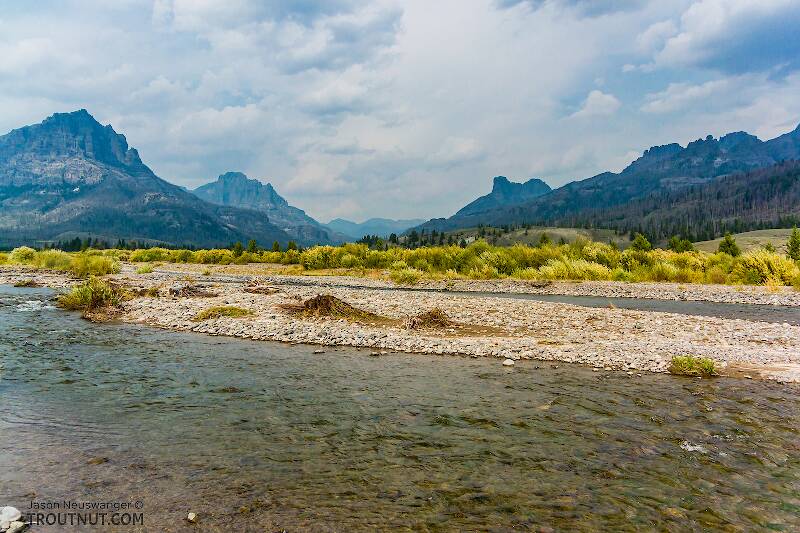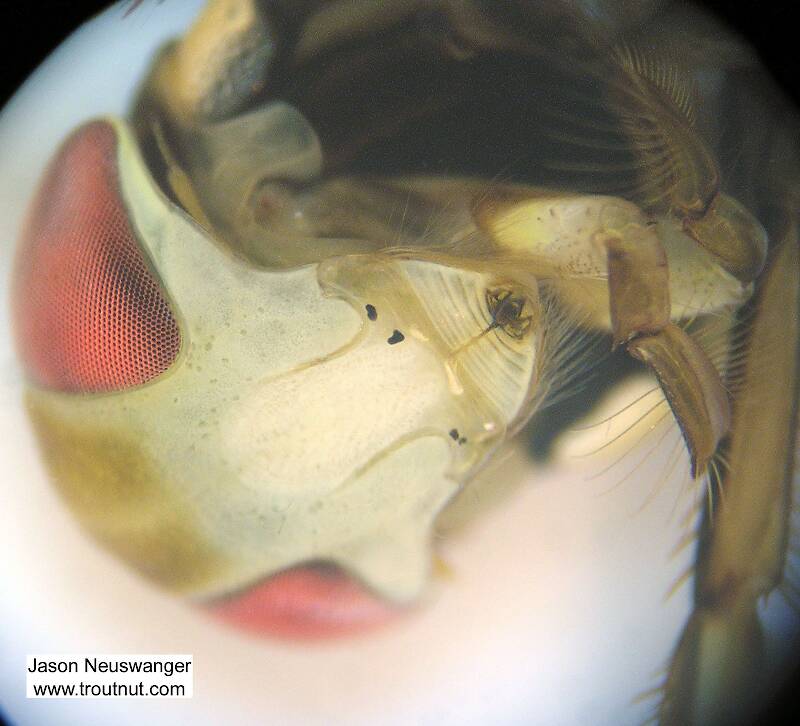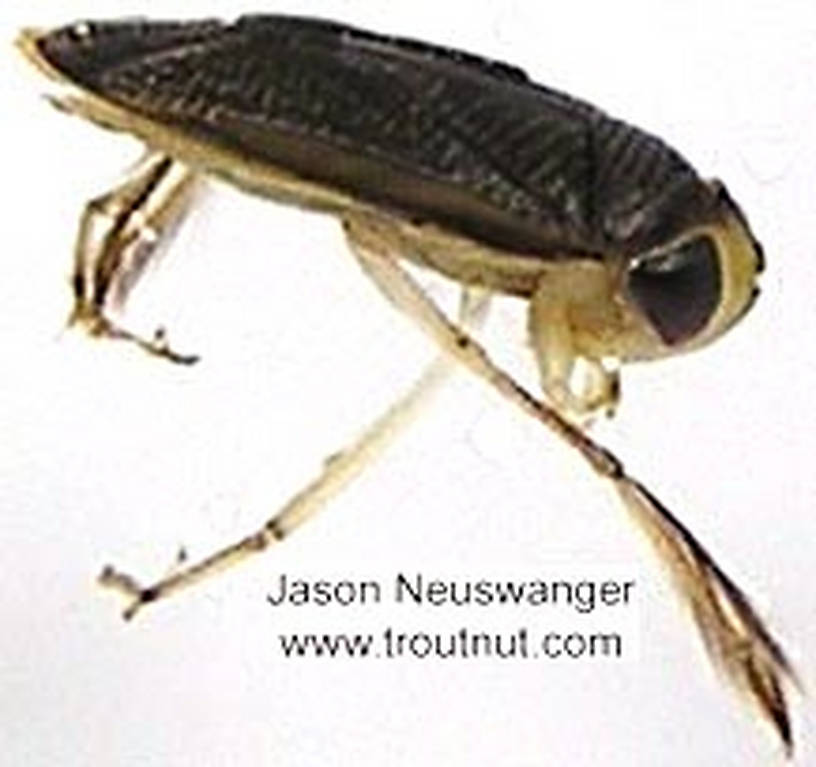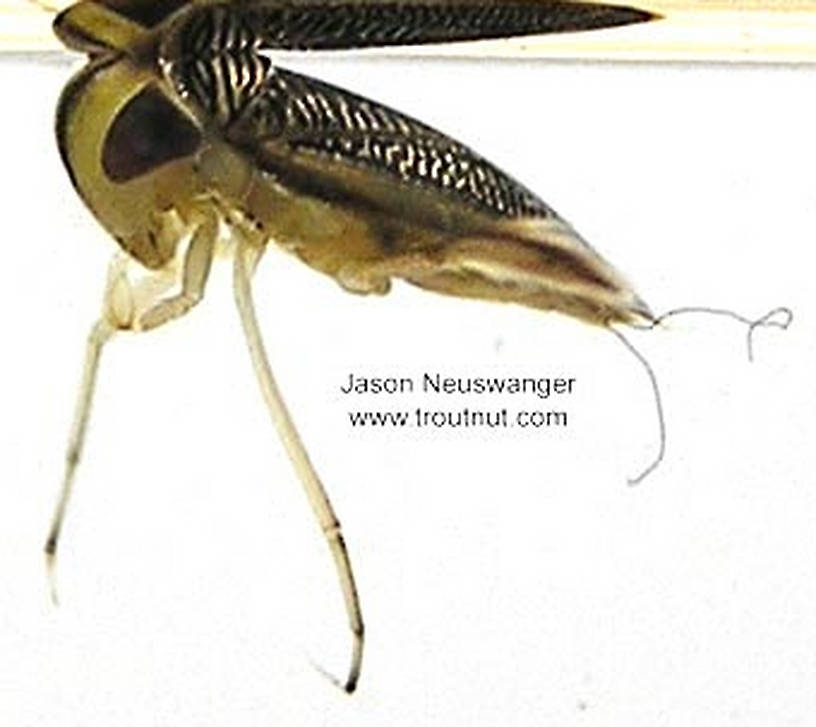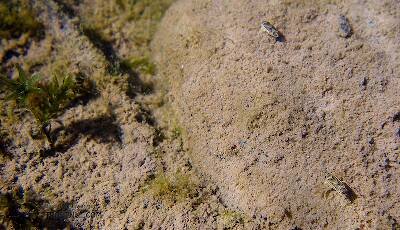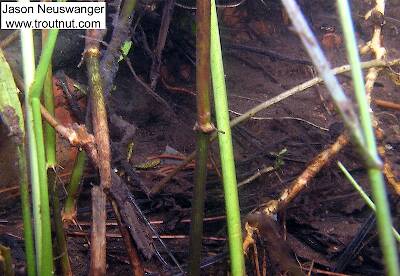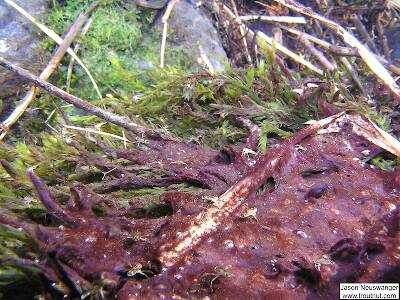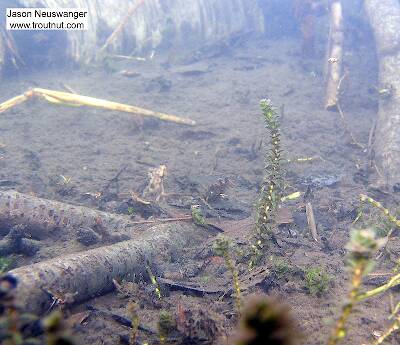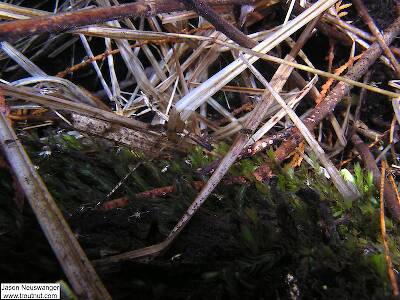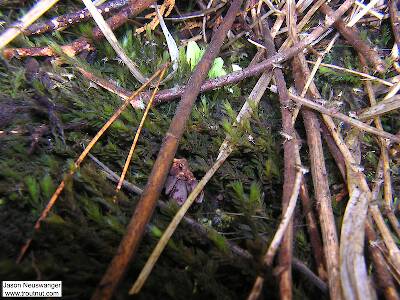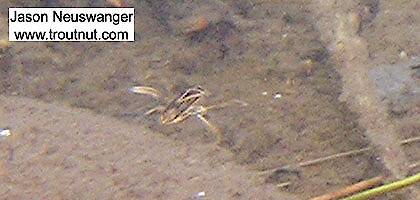
Blue-winged Olives
Baetis
Tiny Baetis mayflies are perhaps the most commonly encountered and imitated by anglers on all American trout streams due to their great abundance, widespread distribution, and trout-friendly emergence habits.
Featured on the forum

I caught this tiny larva without a case, but it seems to key pretty clearly to to Glossosomatidae. From there, the lack of sclerites on the mesonotum points to either Glossosoma or Anagapetus. Although it's difficult to see in a 2D image from the microscope, it's pretty clear in the live 3D view that the pronotum is only excised about 1/3 of its length to accommodate the forecoxa, not 2/3, which points to Glossosoma at Couplet 5 of the Key to Genera of Glossosomatidae Larvae.

Troutnut is a project started in 2003 by salmonid ecologist Jason "Troutnut" Neuswanger to help anglers and
fly tyers unabashedly embrace the entomological side of the sport. Learn more about Troutnut or
support the project for an enhanced experience here.
True Bug Family Corixidae (Water Boatmen)
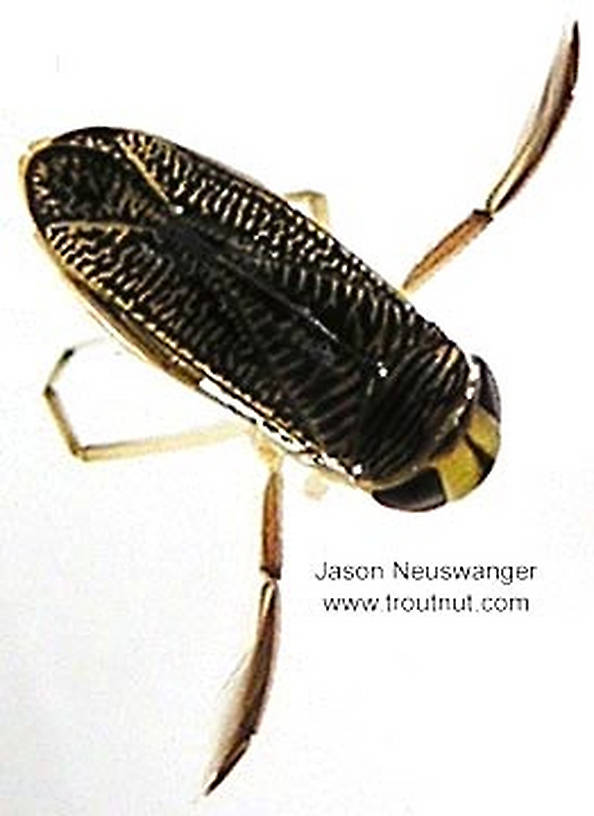
Egg-Laying behavior
Time of day: Afternoon
This is based on my one encounter, so there may be more variation in their behavior and I may have misread something.
Specimens of Water Boatmen:
3 Adults
7 Underwater Pictures of Water Boatmen:
1 Video of Water Boatmen:
Water Boatman Rowing
Water boatmen are excellent swimmers, and you can see here how they use their oars to push themselves through the water, a motion easily imitated by the fly fisher.
Featuring: Corixidae True Bug Adult

